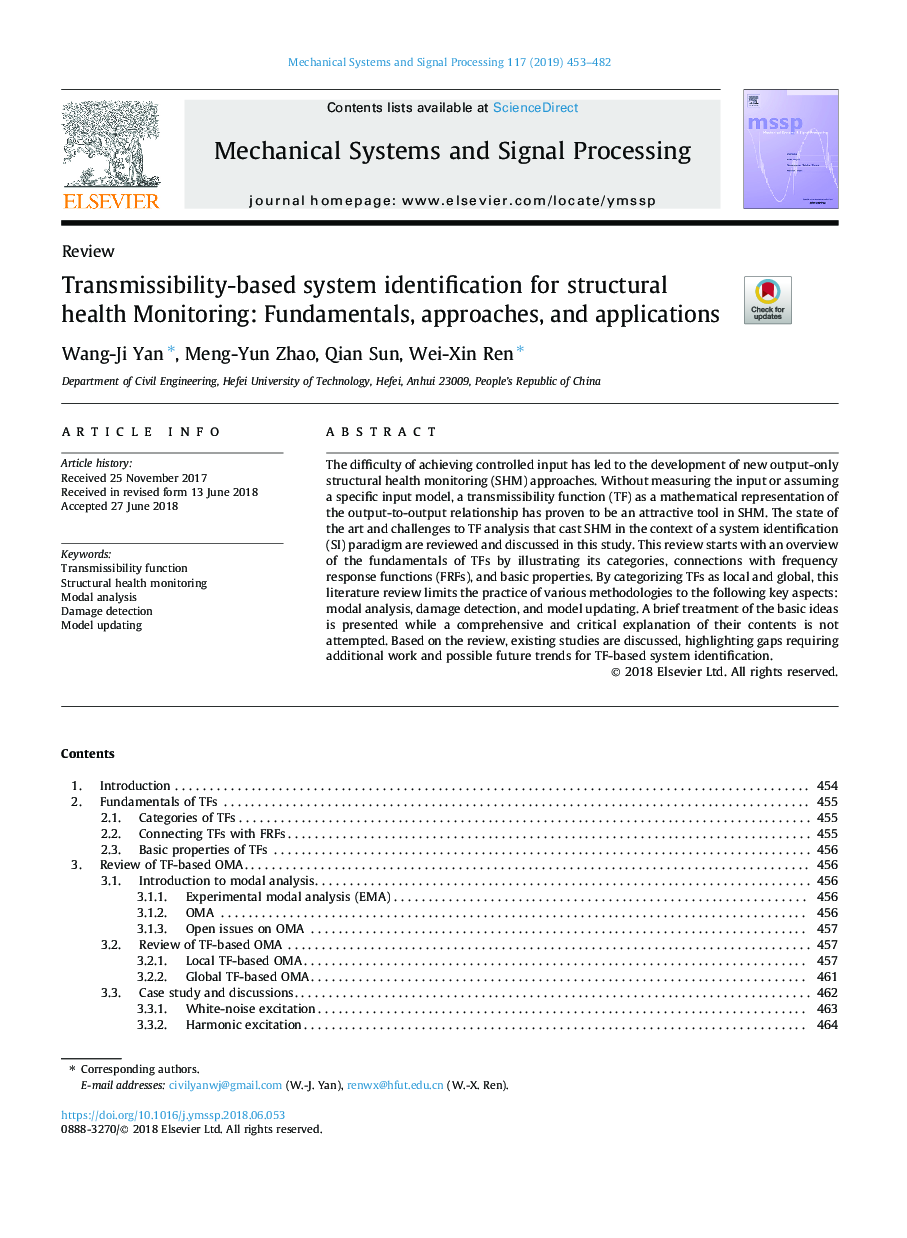| Article ID | Journal | Published Year | Pages | File Type |
|---|---|---|---|---|
| 6953363 | Mechanical Systems and Signal Processing | 2019 | 30 Pages |
Abstract
The difficulty of achieving controlled input has led to the development of new output-only structural health monitoring (SHM) approaches. Without measuring the input or assuming a specific input model, a transmissibility function (TF) as a mathematical representation of the output-to-output relationship has proven to be an attractive tool in SHM. The state of the art and challenges to TF analysis that cast SHM in the context of a system identification (SI) paradigm are reviewed and discussed in this study. This review starts with an overview of the fundamentals of TFs by illustrating its categories, connections with frequency response functions (FRFs), and basic properties. By categorizing TFs as local and global, this literature review limits the practice of various methodologies to the following key aspects: modal analysis, damage detection, and model updating. A brief treatment of the basic ideas is presented while a comprehensive and critical explanation of their contents is not attempted. Based on the review, existing studies are discussed, highlighting gaps requiring additional work and possible future trends for TF-based system identification.
Related Topics
Physical Sciences and Engineering
Computer Science
Signal Processing
Authors
Wang-Ji Yan, Meng-Yun Zhao, Qian Sun, Wei-Xin Ren,
